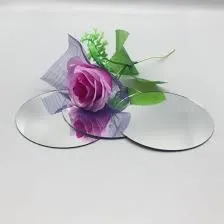

The Acid Etched Glass Process A Craft of Precision and Style
Acid etched glass is a popular medium in the world of interior design and architecture, known for its unique aesthetic and functional attributes. The process of acid etching involves the application of acid to glass surfaces to create intricate patterns, textures, and designs. This article will explore the acid etched glass process, its benefits, applications, and the artistic possibilities it offers.
The Acid Etching Process
The process of acid etching begins with selecting the appropriate type of glass, which can be clear, frosted, or even colored. Once the glass is prepared, the designer applies a stencil or mask to the areas that should remain clear. This can be done using various materials, including vinyl, paper, or special masking tape, allowing for precise control over the final design.
Next, the glass is submerged in or coated with an acid solution, typically hydrofluoric acid or a mixture of acids. This chemical reaction etches the exposed parts of the glass while leaving the masked areas intact. The duration of exposure to the acid will determine the depth and texture of the etching, with longer exposure times producing a more pronounced effect. After the desired level of etching is achieved, the glass is thoroughly rinsed to remove any remaining acid, then dried and finished to ensure it’s safe for handling.
Benefits of Acid Etched Glass
One of the primary benefits of acid etched glass is its ability to diffuse light while maintaining privacy. This makes it an ideal choice for areas such as bathrooms, conference rooms, and public spaces, where both natural light and privacy are essential. Unlike traditional frosted glass, which can appear opaque, acid etched glass provides a soft, elegant appearance while still allowing light to filter through.

Moreover, acid etched glass is highly customizable. Designers can create virtually any design, from simple geometric shapes to intricate floral patterns. This versatility makes it a favorite among architects and interior designers looking to add a touch of sophistication to their projects.
Durability is another advantage. The acid etching process creates a permanent alteration to the glass surface, unlike printed or painted designs that can fade or wear off over time. Acid etched glass is resistant to scratches, making it suitable for both decorative and functional applications.
Applications in Design and Architecture
Acid etched glass is commonly used in a variety of applications. In residential settings, it can be used for shower doors, windows, and room dividers, providing both beauty and practicality. In commercial spaces, it can serve as decorative panels, office partitions, and signage, enhancing brand identity while ensuring privacy.
Moreover, it is increasingly found in artistic installations. Artists and designers have embraced acid etched glass as a medium to explore new forms and expressions. By manipulating light and transparency, they create dynamic works that engage viewers and challenge perceptions.
Conclusion
The acid etched glass process is a remarkable blend of art and science, allowing for creativity while offering functional benefits. Its ability to transform ordinary glass into stunning works of art makes it a valuable asset in design and architecture. As technology advances, we can expect to see even more innovative uses and techniques that further enhance the beauty and versatility of acid etched glass. Whether for practical use or artistic expression, acid etched glass continues to capture the imagination and elevate spaces into realms of style and elegance.